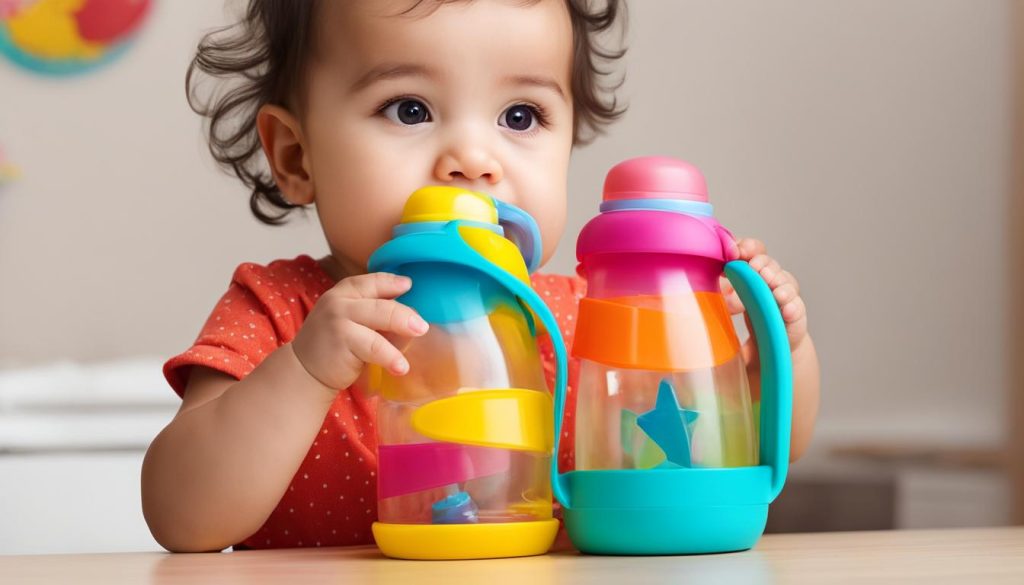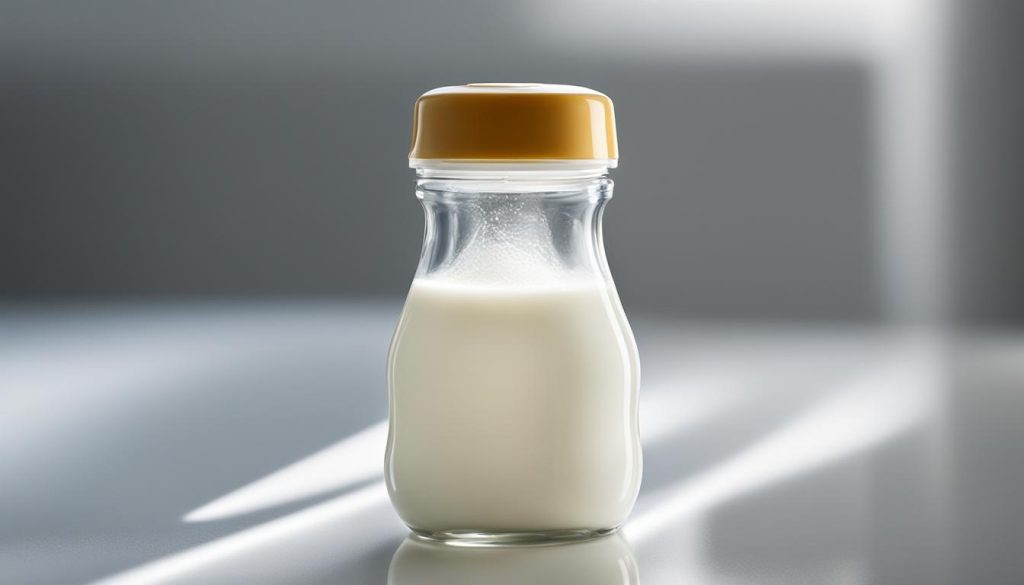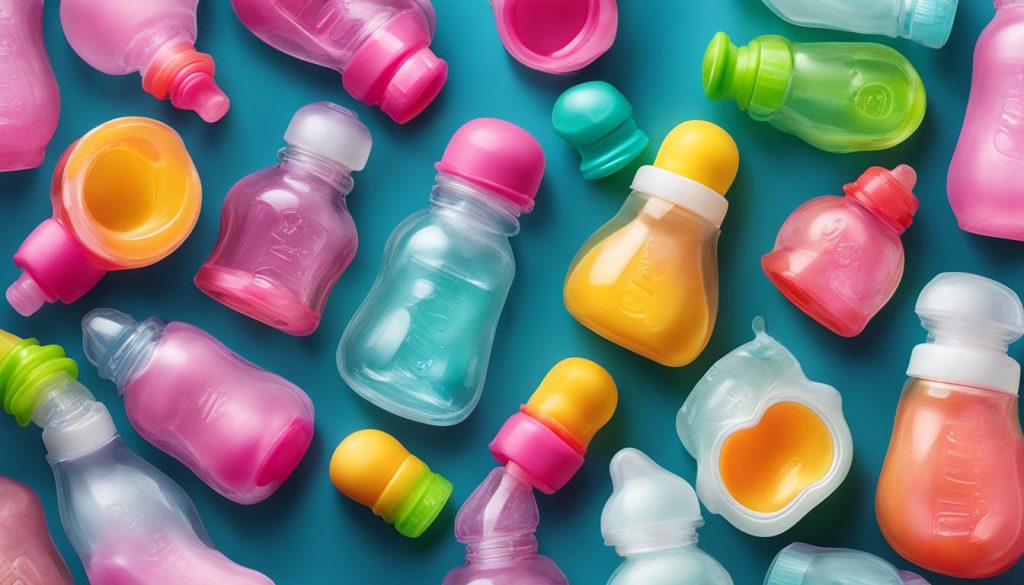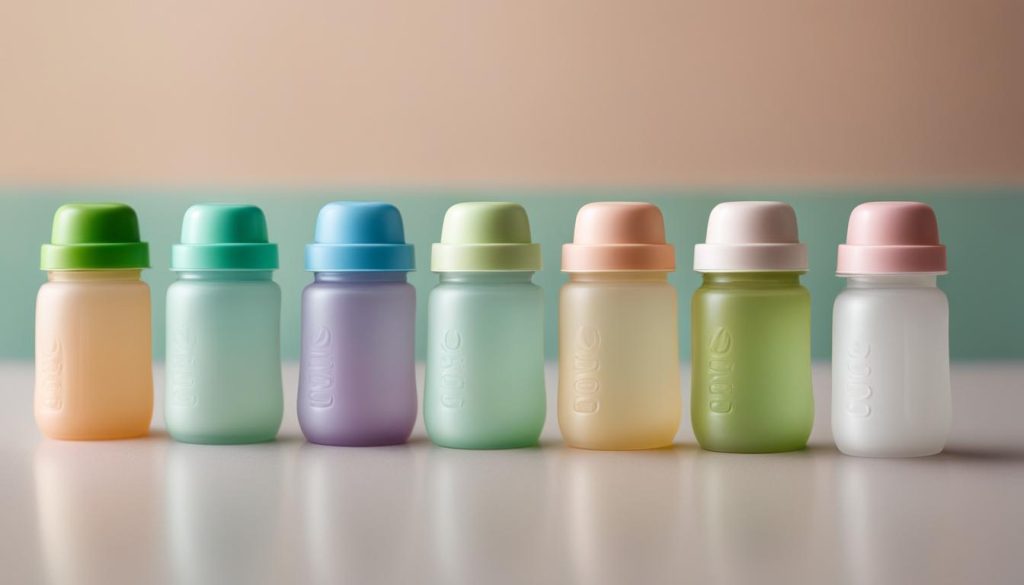Welcome to my guide on finding the best bottle for your 1-year-old as they transition to toddlerhood. Choosing the right bottle is crucial at this stage, as it supports your little one’s journey towards independent drinking. In this article, I will explore different types of bottles, materials used, nipple types, and provide tips for maintenance and sterilization. With expert advice and recommendations, you can make an informed decision that ensures your child’s safety and comfort.
Types of Bottles for 1 Year Olds
When it comes to choosing a bottle for your 1-year-old, it’s important to consider their developmental stage and their transitioning needs. There are several types of bottles available that cater to the specific needs of toddlers, ensuring a smooth transition from bottle to independent drinking. Let’s explore the different types of bottles that are popular among 1-year-olds.
Traditional Bottles: Traditional bottles are designed with a bottle nipple and are similar in shape to bottles used during infancy. These bottles provide a familiar feel for your child and are ideal for those who are still getting accustomed to the idea of drinking from a cup. Traditional bottles are a great choice for a gentle transition.
Sippy Cups: Sippy cups are specifically designed for toddlers who are ready to transition from a bottle. These cups typically have spill-proof lids and easy-grip handles, making it easier for your little one to drink independently. Sippy cups encourage independent drinking while minimizing spills and messes.
Transition Cups: Transition cups are designed to bridge the gap between bottles and regular cups. These cups often feature a soft spout or straw, allowing your child to practice drinking from a cup without the risk of spills. Transition cups are a great choice for toddlers who are ready to take the next step toward drinking from a regular cup.
Recommended Bottles:
| Type of Bottle | Features | Recommended Brand |
|---|---|---|
| Traditional Bottle | Familiar shape, bottle nipple | Brand A |
| Sippy Cup | Spill-proof lid, easy-grip handles | Brand B |
| Transition Cup | Soft spout or straw | Brand C |
Remember, every child is different, so it’s important to choose a bottle that suits your child’s preferences and needs. Experiment with different types of bottles to find the one that works best for your little one’s transition to independent drinking.
Materials Used in Baby Bottles
When choosing a bottle for your 1-year-old, one important consideration is the material used in its construction. Different materials offer various benefits and considerations for your child’s safety, durability, and ease of use.
Glass bottles are a popular choice for parents seeking a safe and environmentally friendly option. Glass is free from harmful chemicals, such as BPA, and is easy to clean and sterilize. However, glass bottles can be heavier and more breakable than other materials, so it’s important to handle them with care. Image source: link
Plastic bottles are lightweight and durable, making them convenient for everyday use. Look for bottles that are made from BPA-free, food-grade plastic to ensure your child’s safety. Plastic bottles also often have measurement markings, which can be useful for tracking your child’s liquid intake. However, it’s essential to check the bottle for any signs of wear or damage and replace it if necessary to avoid potential hazards.
Silicone bottles are another option to consider. These bottles are flexible, lightweight, and unbreakable, making them ideal for on-the-go use. Silicone is also a safe material, free from harmful chemicals. However, silicone bottles may not have the same temperature retention capabilities as glass or plastic bottles, so take this into account if your child prefers warm or cold drinks.
| Material | Pros | Cons |
|---|---|---|
| Glass | Safe, easy to clean, environmentally friendly | Heavy, breakable |
| Plastic | Lightweight, durable, often have measurement markings | Potential for wear and tear, may contain harmful chemicals if not BPA-free |
| Silicone | Flexible, lightweight, unbreakable | May not retain temperature as well as other materials |
Nipple Types for 1 Year Old Bottles
When choosing a bottle for your 1-year-old, one important factor to consider is the type of nipple. The right nipple can make a significant difference in your child’s drinking experience and ease the transition from bottle to cup. Let’s explore the different nipple types available and how to choose the right one for your little one.
Standard Nipples
Standard nipples are the most common type found in baby bottles. They are designed to mimic the shape and feel of a mother’s breast, providing a familiar feeding experience for infants. However, for a 1-year-old who is transitioning to independent drinking, a standard nipple may not be the most suitable choice. These nipples are typically slower flowing and may not encourage self-feeding skills.
Soft Spouts
Soft spouts are an excellent option for 1-year-olds who are learning to drink from a cup. They feature a soft, silicone spout that is gentle on your child’s gums and teeth. Soft spouts often come with built-in handles or are compatible with transition cups, making it easier for your toddler to grasp and hold the bottle independently. These nipples provide a smoother transition from breast or bottle feeding to drinking from a cup.
Straw Nipples
Straw nipples are another popular choice for 1-year-olds. They feature a straw-like spout that allows your child to sip the liquid rather than suck. Straw nipples promote the development of oral motor skills and encourage your child to learn how to drink like a grown-up. They are also spill-proof, making them ideal for on-the-go use. However, it’s important to ensure that the straw nipple is appropriately sized for your child’s age to prevent choking hazards.
In conclusion, choosing the right nipple type for your 1-year-old is crucial for their transition to independent drinking. Consider their developmental stage, preferences, and the benefits of each nipple type. Whether you opt for a standard nipple, soft spout, or straw nipple, ensure that it suits your child’s needs and encourages their self-feeding skills.
Tips for Bottle Maintenance and Sterilization
Proper maintenance and sterilization of baby bottles are essential for ensuring your child’s health and safety. Follow these tips to keep your bottles clean and hygienic:
- Hand wash bottles: Start by rinsing the bottles and nipples with warm water to remove any leftover milk or formula. Then, use a bottle brush and mild dish soap to scrub the inside and outside of the bottle and nipple. Rinse thoroughly with water to remove all soap residue.
- Sterilize regularly: It’s important to sterilize baby bottles regularly, especially when your child is younger. There are several methods you can use, including boiling, steam sterilizing, or using a sterilizing solution. Follow the manufacturer’s instructions for the specific method you choose.
- Prevent odor: To prevent unpleasant odors in your baby bottles, make sure to thoroughly dry them after washing and sterilizing. Allow the bottles to air dry completely before sealing them with their respective lids or storing them.
- Remove stubborn residue: If you notice stubborn residue or stains in your baby bottles, try soaking them in a mixture of white vinegar and water. Let the bottles soak for a few hours or overnight, then wash and sterilize as usual. The vinegar helps to break down the residue and remove any lingering odors.
By following these best practices for bottle cleaning and sterilization, you can ensure that your baby’s bottles are kept clean, safe, and free from harmful bacteria. Remember to inspect bottles regularly for signs of wear and tear, and replace them if necessary to maintain your child’s health and well-being.
| Method | Pros | Cons |
|---|---|---|
| Boiling | – Simple and effective method – Requires only water and a pot |
– May cause wear and tear over time – Can be time-consuming |
| Steam sterilizing | – Quick and convenient – Requires minimal effort – Gentle on bottles and nipples |
– Requires a sterilizer or microwave – Costly upfront investment |
| Sterilizing solution | – Easy to use – Kills bacteria effectively |
– Requires additional purchases – May leave a residue if not rinsed properly |
Remember to prioritize your child’s safety and choose the method that works best for you and your family. With regular cleaning and sterilization, your baby’s bottles will remain clean, safe, and ready to use whenever your little one needs them.
Expert Advice and Recommendations
Throughout this article, I have provided expert advice and recommendations to help you choose the best bottle for your 1-year-old. Transitioning from a bottle to a sippy cup is an important milestone for your toddler’s independence, and finding the right bottle can make all the difference.
When selecting a bottle, it’s essential to consider your child’s developmental stage and preferences. Some toddlers may prefer a traditional bottle with a soft spout, while others may be ready for a sippy cup with a straw. It’s important to experiment with different types of bottles to find the best fit for your little one.
Based on expert opinions and customer reviews, I have compiled a list of top recommended bottles for 1-year-olds. These bottles have received high praise for their safety, durability, and design. However, it’s important to note that every child is unique, and what works for one may not work for another. It’s worth trying out a few different options to see which bottle your child responds to best.
Remember, as your child grows and develops, their drinking needs will change. Keep in mind that the bottle you choose now may not be the best option a few months down the line. Stay attuned to your child’s cues and be open to adjusting their bottle choices accordingly.
FAQ
What is the best type of bottle for a 1-year-old?
The best type of bottle for a 1-year-old depends on their developmental stage and preferences. Traditional bottles, sippy cups, and transition cups are all options to consider. It’s important to choose a bottle that has spill-proof lids, easy grip handles, and a design that supports the transition to independent drinking. Some recommended bottles for each type include XYZ traditional bottle, ABC sippy cup, and DEF transition cup.
What are the different materials used in baby bottles for 1-year-olds?
Baby bottles for 1-year-olds are typically made from glass, plastic, or silicone. Each material has its pros and cons. Glass bottles are durable and easy to clean, but they can be heavy and breakable. Plastic bottles are lightweight and affordable, but some may contain potentially harmful chemicals. Silicone bottles are lightweight, durable, and safe, but they can be more expensive. It’s important to choose a bottle that is BPA-free and suits your child’s needs.
What are the different nipple types available for 1-year-old bottles?
There are several nipple types available for 1-year-old bottles, including standard nipples, soft spouts, and straw nipples. Standard nipples mimic the feel of a bottle nipple, soft spouts help with the transition to drinking from a cup, and straw nipples encourage independent drinking skills. It’s recommended to choose a nipple type based on your child’s preferences and developmental stage. Speak to your pediatrician or consult baby experts for further guidance.
How should I maintain and sterilize baby bottles for my 1-year-old?
Regular cleaning and sterilization are essential to keep baby bottles safe and hygienic. Wash bottles with warm water and mild soap after each use, and sterilize them by boiling for 5 minutes or using a steam sterilizer. Avoid using abrasive cleaners or dishwashers with high heat settings, as they may damage the bottles. Additionally, ensure bottles are completely dry before storing to prevent the growth of bacteria. Refer to the bottle’s manufacturer instructions for specific cleaning and sterilization recommendations.
What expert advice is available for choosing the best bottle for a 1-year-old?
Experts recommend considering your child’s developmental stage and preferences when choosing a bottle. Look for bottles with spill-proof lids, easy grip handles, and transition-friendly designs. It’s important to experiment with different bottles and nipple types to find the best fit for your child. Some additional tips include considering the bottle’s material, durability, ease of cleaning, and environmental impact. Consult baby experts, read customer reviews, and consider recommendations from trusted sources to make an informed decision.




